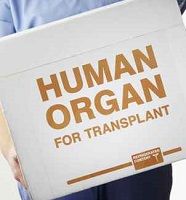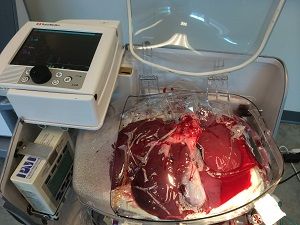Article
Perfusion Devices Raise Transplant Hopes
Author(s):
Could portable perfusion devices be a game-changer for organ transplants? The machines keep organs "alive" for days at warm temperatures. That prolongs cell life, slowing the race against the damage that can set in within hours when donor organs are kept on ice in coolers. Manufacturer TransMedics, based in Andover, MA, makes devices for the lung, heart, and liver Researchers and clinicians express growing excitement-along with some skepticism-at the prospect that these medical devices could dramatically increase the viability of donor organs.

Could portable perfusion devices be a game-changer for organ transplants?
The machines keep organs “alive” for days at warm temperatures.
That prolongs cell life, slowing the race against the damage that can set in within hours when donor organs are kept on ice in coolers. Manufacturer TransMedics, based in Andover, MA, makes devices for the lung, heart, and liver.
Researchers and clinicians express growing excitement—along with some skepticism—at the prospect that these medical devices could dramatically increase the viability of donor organs.
Beyond that, as a manufacturer hopes, the devices could one day allow doctors to remove a diseased organ, such as a cancerous lung, expose it to a higher dose of radiation therapy or antibiotics than possible if it were inside a patient, then return the healthier organ to its owner.
More likely is that the device’s ability to keep organs warm could mean that fatty livers from donors would suddenly be viable. Due to rising obesity rates, transplant teams are finding that already scarce donor organs are getting even more scarce because of an increase in organs found to have a lot of fat in or around them. (The device is seen in TransMedics photo below.)
“Fat cells rupture in the cold and the organs get necrotic,” said Neal Beswick, TransMedics’ vice president of global marketing. That results in such organs being discarded, Beswick said, not simply the fact that they are fatty. ”The hope is that we could use these fatty livers if they are kept on our system and not iced,” Beswick said.
In an HCPLive.com story about the ongoing debate on how to solve the problem of the growing organ shortage, Howard Nathan, president and chief executive of the Gift of Life, a 40-year-old organ procurement organization (OPO), dismissed the idea that a new medical device would help much. Nathan, whose organization is the most successful in the nation in terms of persuading people to designate their wish to be a donor after death, believes that the main solution to the shortage is to get other OPOs to do the same.
Nathan said he did not accept the notion that these devices would make significantly more organs available.
Responding to Nathan, David Reich, MD, chief of the division of multi-organ transplantation and hepatobiliary surgery at Drexel University College of Medicine and Hahnemann University Hospital in Philadelphia, PA says he sharply disagreed.
The TransMedics devices are in clinical trials at 20 sites in the US and have been approved in Europe. Hahnemann is not one of the sites, Beswick said.
“You’ll see perfusion devices eventually become a game changer permitting organ resuscitation, de-fatting, preservation, transport, and selection,” Reich said. “They’ll make a significant dent in the shortage.”
A study of the device’s performance in lung transplants was published in
in 2012.




